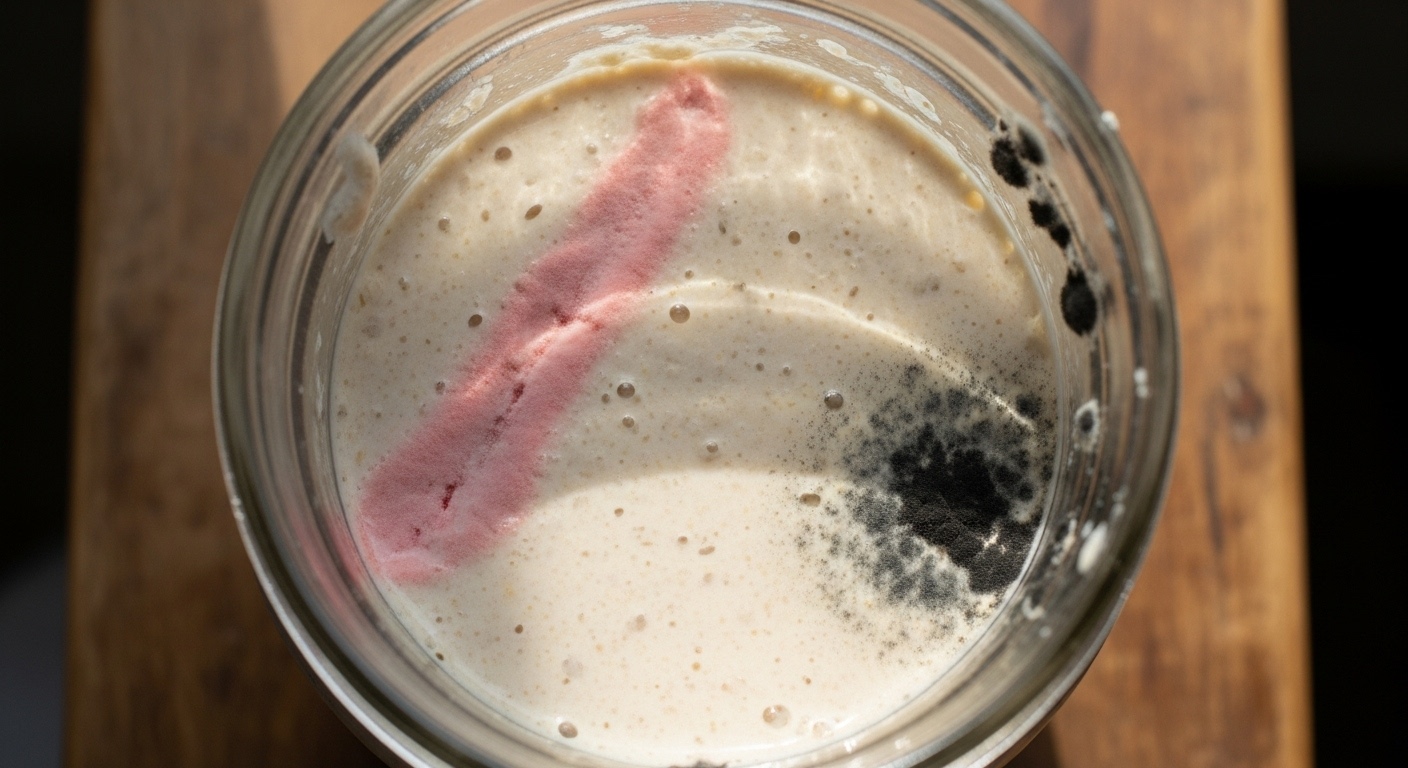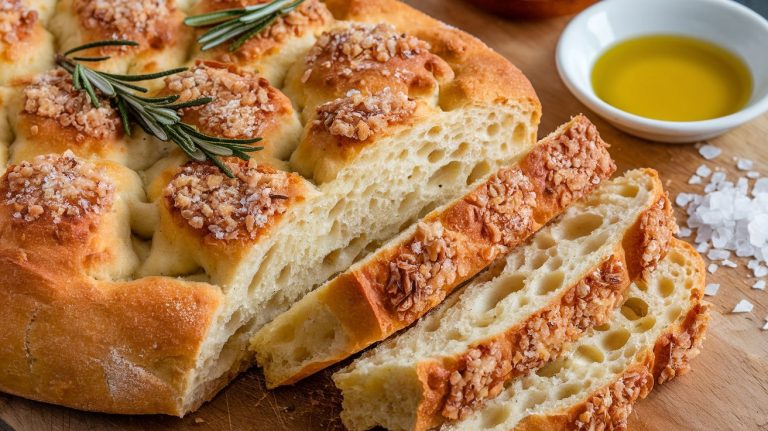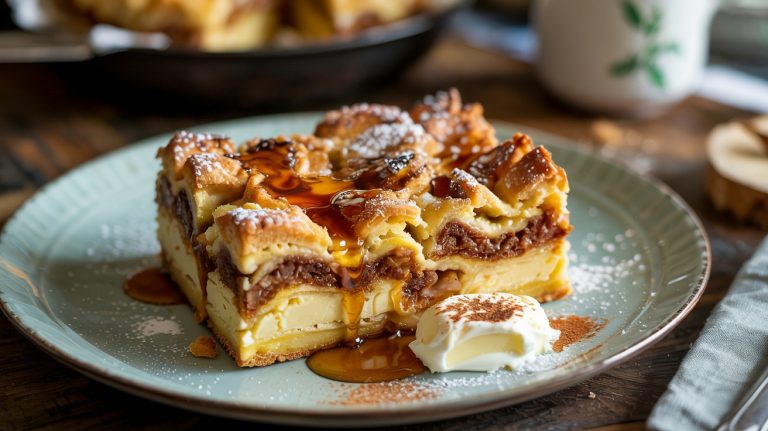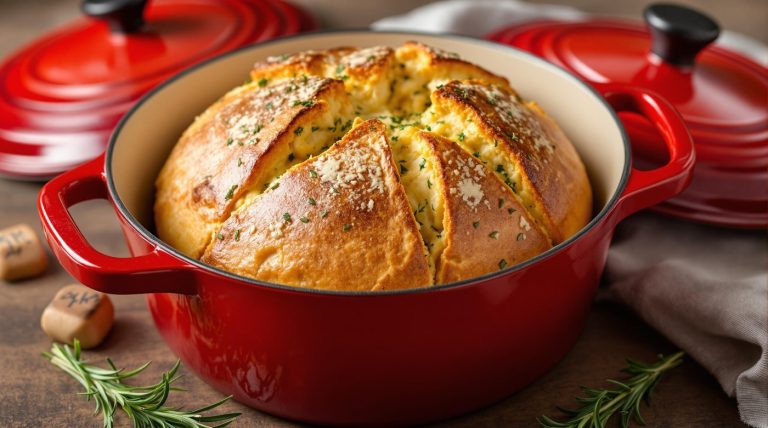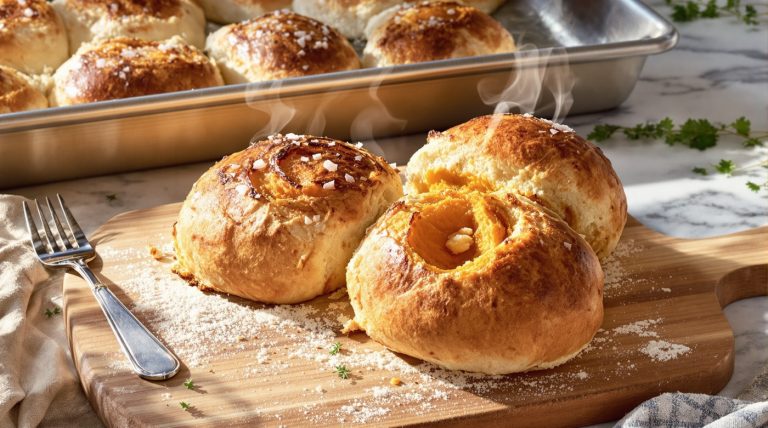Serratia Marcescens Sourdough Starter: Act Fast, Bake Safe
If you’re seeing pink or reddish streaks in your sourdough starter, you’re likely dealing with Serratia marcescens, a harmful bacterium. It thrives in neglected, moist environments and can cause off-odors like acetone or fruity smells.
This contamination risks nausea or infection if ingested and taints bread flavor and appearance. Check for slime or mottled patches, and don’t ignore unusual hues. Stick around to uncover detailed steps for handling and preventing this issue.
Key Takeaways
- Serratia marcescens appears as pink, red, or orange streaks in sourdough starters, indicating contamination.
- It thrives in neglected, underfed starters or warm, moist environments, risking bacterial overgrowth.
- Contamination causes health risks like nausea and taints bread with off-flavors and discoloration.
- Prevent it by maintaining hygiene, consistent feeding, and proper storage at 70–75°F.
- Discard starters with persistent pink streaks to avoid health issues and ensure safety.
Serratia Marcescens in Sourdough
While exploring the complexities of sourdough fermentation, you’ll encounter various microorganisms, including Serratia marcescens, a harmful bacterium that can compromise your starter. This pathogen manifests as pink, red, or orange streaks in irregular patches, distinct from uniform color changes caused by certain flours.
Unlike mold, it’s a bacteria known for producing red stains in cultures and posing potential health risks if ingested.
You’ll find Serratia marcescens thriving in starters underfed or neglected, where beneficial bacteria weaken, allowing contamination. Poor hygiene with utensils or containers can introduce it, and extended refrigeration without feedings may exacerbate bacterial imbalances. Regular feeding and proper hygiene are essential to prevent such contamination and maintain a healthy starter environment.
Its presence signals a compromised environment, underscoring the critical need for consistent maintenance to suppress such harmful microbes in your sourdough culture. Understanding the importance of regular feeding schedules can help maintain microbial balance and prevent the growth of unwanted pathogens like Serratia marcescens.
Identifying Contamination Signs
When examining your sourdough starter, look closely for pink or orange streaks on the surface or within the mixture, as these are primary indicators of Serratia marcescens contamination.
Notice the growth patterns, distinguishing smooth, colored patches from fuzzy mold or natural flour hues like rye, which present different textures and tones.
If you spot these distinct visual markers, recognize them as a critical sign of bacterial overgrowth that demands immediate attention.
Additionally, be aware that such unusual color changes can signal a serious problem beyond typical mold issues, requiring prompt action to prevent health risks.
It’s also important to monitor for any off-putting odors, as a rancid smell can further confirm the presence of bacterial contamination.
Spotting Pink Streaks
As you maintain your sourdough starter, keep a sharp eye out for pink or orange streaks or spots on the surface, which signal potential contamination by Serratia marcescens. These streaks often cluster or streak irregularly, showing a distinct redder hue rather than a uniform pale pink.
Don’t confuse this with a slight tint from flours like rye, which lacks the defined patterns of Serratia. Maintaining a regular sourdough starter maintenance schedule can help prevent such contamination from taking hold.
Unlike mold, which appears fuzzy with thread-like roots, Serratia’s contamination is smooth in texture. Recognizing this critical difference aids in early detection. Additionally, high temperatures can accelerate bacterial growth, often leading to discoloration like pink streaks.
If you spot these signs, understand that Serratia is a pathogenic bacterium, posing health risks if ingested. Food safety guidelines strongly advise discarding the starter to prevent potential illness from this harmful contaminant.
Recognizing Growth Patterns
Before you can maintain a thriving sourdough starter, it’s critical to identify abnormal growth patterns that signal contamination or imbalance. Check for visual cues like mold, black patches, or hooch—a dark liquid layer indicating underfeeding.
A fuzzy, powdery, or slimy texture suggests mold or bacterial overgrowth, so discard affected portions immediately.
Odors offer clues too. If you detect acetone or nail polish remover smells, your starter’s over-fermented and needs frequent feedings. Strange smells like alcohol are normal and indicate bacteria need more oxygen for conversion. An unpleasant or overly sweet, fruity aroma can indicate neglect or imbalance.
Watch for Serratia marcescens risks beyond pink streaks, as it poses health threats if ingested. Proper storage in a cool, dark place can help prevent mold contamination and maintain starter health.
Regularly monitor and maintain cleanliness to prevent contamination, ensuring your starter’s microbial balance through consistent feeding and proper storage conditions.
Impact on Bread Safety and Quality
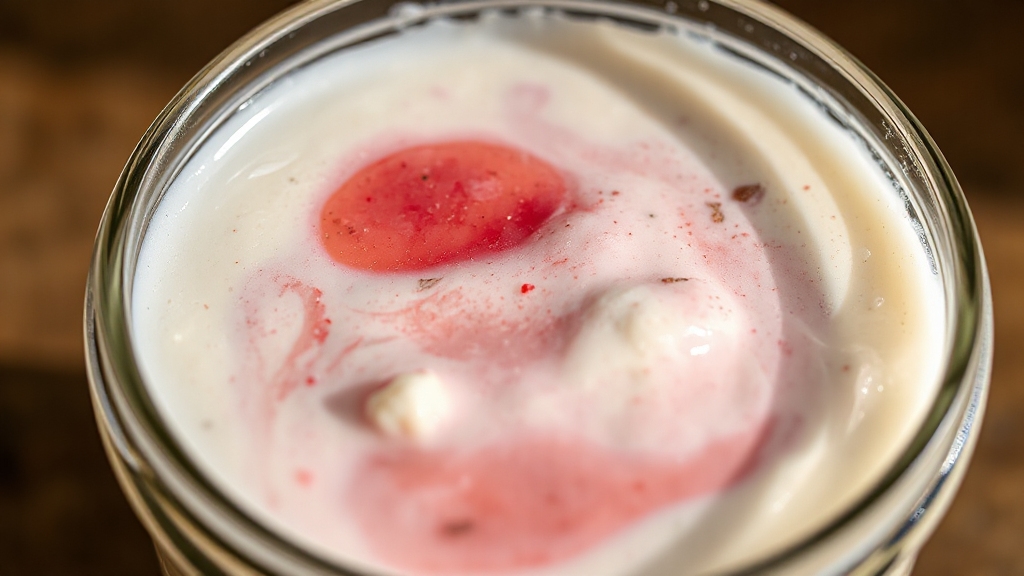
As you assess the impact of Serratia marcescens on your sourdough, recognize that bread safety risks emerge from potential health threats like nausea or infection due to this harmful bacterium.
You’ll also notice quality issues, such as pink or orange discoloration that mars the bread’s visual appeal and signals contamination.
Additionally, expect flavor alteration concerns, as the bacterial presence can taint the taste and compromise the bread’s palatability.
Be aware that many bakers share images of unusual starter colors on social media, seeking advice and reassurance about potential contamination.
To prevent such contamination, maintain a consistent feeding schedule to keep your starter active and reduce the risk of harmful bacterial growth like Serratia marcescens contamination.
Bread Safety Risks
To mitigate risks, consider these critical factors:
- Hygiene Protocols: Maintain strict hygiene to prevent cross-contamination during preparation.
- Storage Conditions: Store starters in controlled environments to limit microbial growth.
- Regular Monitoring: Test for contaminants like S. marcescens to ensure safety.
Given its prevalence in damp environments, be vigilant about moisture levels to avoid S. marcescens growth. Additionally, using bread makers with temperature control features can help maintain consistent conditions to prevent microbial contamination.
Quality Discoloration Issues
While ensuring bread safety is paramount, you can’t overlook the impact of Serratia marcescens on sourdough starter quality, particularly through visible discoloration.
You’ll notice pink or reddish streaks and mottled patches on the starter surface, often intensifying into orange hues with a slimy film if neglected. This prodigiosin pigment signals microbial imbalance, disrupting fermentation dynamics and impairing dough rise consistency.
You might see uneven crumb color or spotting in baked bread due to these visual defects. Recovery’s unreliable; if discoloration appears, discard the starter to avoid compromised results. Maintain rigorous sanitation and regular feeding, as this bacterium thrives in moist, neglected environments.
Additionally, a healthy starter’s pH range of 3.5 to 5 can naturally deter harmful bacteria like Serratia marcescens. Using precise tools like high-capacity baking scales can help maintain consistent feeding ratios for a balanced starter.
Act swiftly—disinfect tools and surfaces to prevent further contamination and quality loss.
Flavor Alteration Concerns
Consider these specific impacts:
- Flavor Distortion: Unwanted compounds from Serratia marcescens create off-tastes, reducing bread appeal.
- Odor Issues: The bacteria’s metabolic activity produces foul smells, transferring to the final product.
- Safety Risks: Potential toxicity from this harmful pathogen jeopardizes edibility and regulatory compliance.
You must address these risks promptly, as they affect not just quality but also marketability and safety of your sourdough bread. Additionally, the presence of Serratia marcescens in a starter raises concerns about bacterial contamination risks due to its potential to cause infections if consumed.
Furthermore, similar to challenges faced with sourdough mixes, improper handling or contamination can lead to texture inconsistencies in the final bread product.
Factors Contributing to Bacterial Growth
As you explore the science of sourdough starters, understanding the factors contributing to bacterial growth is essential for maintaining a healthy microbial environment. You’re dealing with variables like flour type—white flour can boost Serratia marcescens, evident by pink streaks, while rye or spelt fosters diversity. Warm, humid conditions and poor air circulation accelerate harmful bacterial proliferation.
Water quality matters too; chlorine in tap water disrupts microbial balance, and excess hydration dilutes acidity, inviting contamination. Additionally, the microbial biodiversity in sourdough, shaped by lactic acid bacteria and yeasts, plays a critical role in preventing the dominance of harmful pathogens like Serratia. Just as with baking focaccia, the choice of high-protein bread flour can influence the structure and microbial activity in your sourdough starter.
Here’s a snapshot of key influences:
| Factor | Impact | Risk for Serratia |
|---|---|---|
| White Flour | Promotes harmful bacteria | High |
| Warm, Humid Storage | Speeds bacterial growth | High |
| Chlorinated Water | Disrupts microbial balance | Moderate |
Monitor these elements closely to maintain starter integrity.
Preventive Measures for Starter Health
To safeguard your sourdough starter from harmful bacteria like Serratia marcescens, you must implement strict preventive measures across hygiene, feeding, and environmental controls.
Start by ensuring impeccable sanitation—wash your hands, utensils, and surfaces before handling your starter.
Stick to a consistent feeding schedule, using equal parts flour and water by weight, and monitor activity to adjust frequency if needed.
Keep your starter in a cool, dry spot at 70–75°F (21–24°C), avoiding humidity and direct sunlight. Use glass containers to avoid reactions or bacterial buildup from metal or plastic glass containers recommended.
Additionally, ensure that you troubleshoot any starter issues by adjusting environmental conditions to optimize yeast activity.
Key practices include:
- Sanitize: Regularly disinfect tools, containers, and storage areas to prevent contamination.
- Feed Precisely: Use fresh, unbleached flour and weigh ingredients for balance.
- Control Environment: Maintain ideal temperature and airflow with breathable covers.
Steps to Handle Infected Starters
When you detect signs of Serratia marcescens in your sourdough starter, such as pink discoloration or streaks on the surface, act swiftly to assess and address the contamination.
Stop feeding cycles immediately and inspect the starter. Carefully remove hardened crust or visibly infected areas to limit spread. Extract a clean portion from unaffected zones, ideally the bottom, and transfer it to a sterile container.
Immediately halt feeding and inspect your starter. Remove infected areas, extract clean portions from the bottom, and transfer to a sterile container.
Begin recovery by feeding this portion with equal parts fresh flour and water. Implement frequent feedings—daily or twice daily—to bolster beneficial microbes. Maintain a stable temperature (21-25°C) and avoid disturbance. Remember that pink streaks indicate bacterial contamination and poor maintenance, so vigilance is key during recovery.
Monitor closely for bubbling, rising activity, or recurring pink streaks. Assess the starter’s condition for at least a week before deciding its viability.
Health Risks and Precautions
Understand that while managing an infected sourdough starter is essential, recognizing the health risks tied to Serratia marcescens demands equal attention. This opportunistic pathogen can cause urinary tract infections, respiratory issues, and gastrointestinal illness if ingested via contaminated food.
You’re at risk through ingestion, inhalation of dust, or contact with open wounds while handling an infected starter. Immediate action is necessary if you detect any signs of contamination, as Serratia marcescens thrives in humidity and can spread quickly in warm, moist environments.
To protect yourself, consider these critical precautions:
- Discard contaminated starters: Don’t bake with anything showing pink or orange streaks.
- Maintain hygiene: Wash hands and sterilize utensils to prevent cross-contamination.
- Store properly: Keep starters in clean, dry containers to limit bacterial growth.
If you’re immunocompromised, elderly, or a young child, take extra care, as your vulnerability to severe infections is considerably higher.
Frequently Asked Questions
Can Serratia Marcescens Affect Other Fermented Foods?
You’re right to question if Serratia marcescens can impact other fermented foods. This bacterium thrives in damp, nutrient-rich settings, so it can colonize various products like bread or polenta, causing discoloration, off-odors, or slimy textures.
While not always pathogenic, some strains pose risks, especially to immunocompromised individuals. You must maintain strict sanitation and dry conditions to prevent contamination, as biofilms make it tough to eliminate once established.
Is Serratia Marcescens Common in Home Kitchens?
You’ll find Serratia marcescens lurking in home kitchens more often than you’d think, thriving in damp, nutrient-rich spots like sinks and sponges.
Studies suggest it’s present on surfaces exposed to moisture and organic residue. Its biofilm-forming ability makes it persistent, so you’ve gotta disinfect with bleach and dry surfaces thoroughly to prevent its sneaky colonization.
How Does Temperature Influence Serratia Marcescens Growth?
Let’s explore how temperature influences Serratia marcescens growth. You’ll notice it thrives between 5°C and 40°C, with ideal growth from 10°C to 37°C.
Below 5°C, growth slows drastically; above 40°C, it halts.
At 25–30°C, you’ll see red prodigiosin pigment, but at 37°C, colonies turn colorless.
Temperature also tweaks metabolic activity, like lactic acid production, and regulates gene expression for pigment synthesis.
Keep conditions precise!
Can Serratia Marcescens Spread Through Air?
Imagine you’re in a hospital ward, and tiny, invisible particles of Serratia marcescens drift through the air from a contaminated ventilator. Yes, you can encounter this bacterium spreading via air, especially in damp, poorly ventilated environments.
Studies confirm it’s often airborne in healthcare settings with inadequate infection control. You’ll find it lingering in moist areas, exploiting ventilation systems, and posing risks as an opportunistic pathogen to vulnerable individuals.
Are There Natural Remedies Against Serratia Marcescens?
Consider xylitol, which effectively inhibits bacterial growth and virulence, offering a promising treatment option. Bergamot essential oil also shows antimicrobial potential with compounds like limonene, though more research is needed.
Lemon juice, vinegar, baking soda, and borax have been tested, but their efficacy isn’t well-documented. Stick to evidence-based options and consult experts for precise, tailored therapeutic strategies.
Safeguard Your Starter—Keep Contamination at Bay
You’ve now got the tools to tackle Serratia marcescens in your sourdough starter. Don’t let this bacterial menace become a catastrophic plague in your kitchen!
Monitor for contamination, control environmental factors, and apply preventive measures with precision. If infection strikes, act swiftly to discard or remediate.
Protect your health by understanding risks and handling starters meticulously. Keep your baking environment sterile, ensuring your sourdough remains a safe, high-quality masterpiece.

